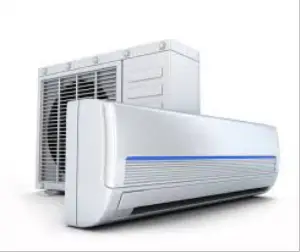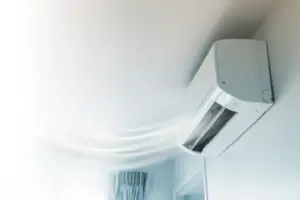All you need to know about Split Systems Air Conditioners
Air Conditioning FAQs
Choosing the best air conditioner to suit your specific needs, both financially and functionally, can be a challenge. The split-system air conditioner is the most popular in Australia and hence we will be focusing on the pros and cons of each type of split system out on the market currently.
One of the most important factors to consider when making a considerable investment in an air conditioner is which type of split system is best for you? Reverse cycle? Inverter? Multi-head? As such, we will be evaluating the pros and cons of each type so you can be as informed as possible when making a purchase decision for your home.
What is a Split System Air Conditioner?
A split air conditioner essentially consists of two parts; the outdoor unit (the condenser) and the indoor unit (fan coil). The outdoor unit is installed usually on or close to the wall outside the room or area that you wish to cool whilst the split unit has a smaller compressor coil box on the outside and individual room units on the inside. These are made to heat or cool a room without the need for ducting. The indoor unit contains the coil, a blower and an air filter.

Why a Split System?
There are many advantages to owning or purchasing a split system over other traditional forms of A/C units, some of which include:
- Split systems do not require major installation work as there is no need for ductwork.
- Using electrical wires and tubing to connect the indoor and outdoor units as opposed to ductwork is good for your wallet and the environment.
- Ductwork required for many traditional A/C units increases energy expenses as centralised units lose energy due to heat expenditure in the air duct system.
- Split systems are much quieter than traditional A/C systems because the compressor and fan that cools the compressor are located outside the room being cooled, unlike the noise that accompanies window units.
Now we will take a look at three of the most popular types of split systems, how they work and the pros and cons of each option.

The reverse cycle
One of the main advantages of a reverse cycle split system is its ability to be used for cooling and heating efficiently.
How they keep you warm in winter: Reverse cycle split systems absorb heat from the outdoor air to warm the air inside your home which is more energy efficient. The reverse system can draw in heat from the air outside and dispense it around the room even if it is freezing outside.
How they keep you cool in summer: The reverse cycle split system air conditioner can be used to cool your home. Using an energy efficient system, the unit will absorb heat from the air inside your home and disperse it outside, thus leaving your home cooler. The system is so efficient it can cool your home in temperatures as high at 46 degrees Celsius which is often a reality during Australian summers.
Pros
- Can be used both for cooling in the summer and heating in the winter.
- One of the cheapest and effective forms of heating/ cooling your home or commercial space.
- Saves money in the short term, as there is a relatively low initial installation cost compared to other types of air conditioning system which need to lay duct-work or other significant works on your home.
Cons
- Increases the cost of electricity which increases its running costs.
- Losing power means losing heating or cooling.
- Purchase and installation costs can be high.
In summary, whilst the purchase and installation costs can be high for a reverse cycle system, they are often a great option for the long term even if you are only using the systems for a few weeks a year and the pros certainly outweigh the cons.
The Inverter
In order to understand why inverter split systems are more energy efficient it is important to understand how conventional, non inverters, work. Non-inverter units regulate the temperature in the room by using a compressor. That is, when the room temperature reaches your desired level the unit’s monitor simply switches off.
However, inverter units have the ability to vary the compressor speed. The outdoor unit therefore does not need to switch on and off continuously and merely speeds up or down as the expenditure requires of it. In other words, the controller speed allows the inverter units to maintain a constant temperature without having to switch its motor on and off constantly. Thus, less electricity is used and inverter models are generally more efficient and cost less to run.
We note that an inverter split system is a type of reverse cycle split system, in the sense that there will still be an internal and external unit, and the system has the ability to both cool and heat.
Pros
- They can maintain a set temperature within a narrow range.
- Between 30%-60% more energy efficient, saving you electricity costs of running the system.
- Environmentally friendly.
- Faster time to reach room temperature we want.
- Less fluctuations in temperature.
Cons
- Price is generally higher than regular models.
- Uses more movable parts to control the compressor motor speed, making it expensive to repair should it break.
In summary, most split systems on the market these days are inverter models and it is easy to see the appeal of this energy efficient, cost saving choice.
Multi-Head
Another option when purchasing a split system is opting for a multi-head/ multi-split system. This is where you can have multiple indoor units connected to a single outdoor unit, making it easy to cool multiple rooms simultaneously or maintain a desired climate throughout a large room by using two indoor cooling units. The multi-head system is an efficient and cost-effective way to cool your home.
A split air conditioner is an efficient and cost-effective way to cool your home. It should be noted that the initial cost of this kind of air conditioning unit is significantly higher than a window unit and it does require professional installation. However, the amount of money you will save on your energy bills as well as the longevity of the unit will make it worth your while in the end.
Pros
- Advantageous for people with limited space.
- Neater and more aesthetically pleasing than having several outdoor units.
- Efficient and cost effective.
Cons
- Initial buying and installation costs can be high.
- If the outdoor unit fails all the indoor units fail too.
In summary, multi head systems, whilst a niche option, definitely provide many advantages. Having a single outdoor unit is an alluring option and ought to be considered. It should be noted that the majority of split systems are single head ones, making a multi-head system a special order and thus a higher price. This is attributed to the fact that they are usually sold by specialist companies and longer pipes/cables are often needed to install the system.
GET A SERVICE OR REPAIR!
Simply fill in the form below & you'll receive a call from our team to organise your service or repair within 24 hours